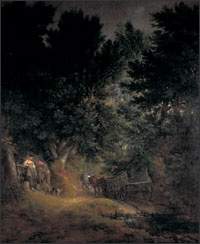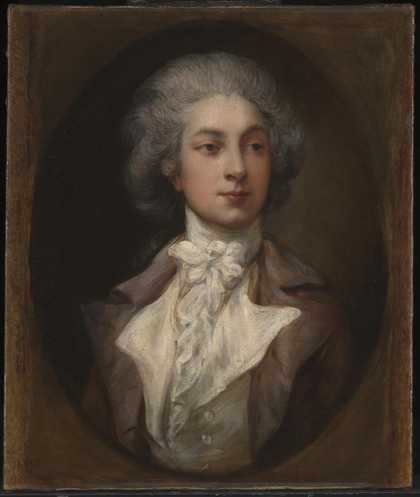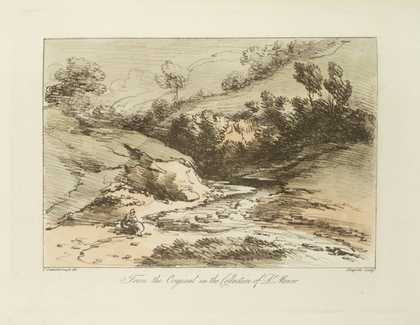
Thomas Gainsborough Wooded Landscape with Country Wagon, Milkmaid and Drover
Thomas Gainsborough (1727–1788) is widely acknowledged as one of the masters of eighteenth-century art, with a truly international reputation. His paintings embody the sophistication and elegance of his age, while the inventiveness and complexity of his techniques remain dazzling.
This exhibition offers a new vision of Gainsborough as an artist whose work is certainly charming and engaging, but also intellectually rewarding and vibrant. In an era of increasing conformity in the British art world, dominated by the theory-led practice of Reynolds and the Royal Academy, Gainsborough's art provided a vital alternative. The exhibition shows that, in favouring visual pleasure over theory, originality over convention, and an engagement with the social world rather than academic abstraction, Gainsborough and his art have a continuing significance for British culture.
The exhibition brings together the largest group of works by this artist ever gathered, including paintings and drawings from public and private collections in Britain, Europe and America, and loans from the National Gallery, London, the Getty Museum in Los Angeles, the Philadelphia Museum of Art, the Gemäldegalerie, Berlin and the National Gallery of Art, Washington. Alongside some of the most iconic images in British art, the selection includes many lesser-known pieces, some being seen in Britain for the first time in living memory. These will demonstrate the sheer range, quality and originality of Gainsborough's art - the glamour of his portraits, the touching sentimentality of his images of children, and the engaging naturalism of his landscapes.
At the physical and conceptual heart of the exhibition is an extended gallery presenting a selection of the major works Gainsborough exhibited in London in his lifetime. This spectacular procession of glamorous full-length portraits and grand landscapes gives the visitor a sense of how the artist's career unfolded in public. The emergence of public art exhibitions from 1760 was a key element of the modernisation of the British art world. This selection shows how the new physical and intellectual contexts of the art exhibitions helped shape many of the artist's most important works such as The Harvest Waggon (Barber Institute) and The Linley Sisters (Dulwich Picture Gallery).
Alongside the central selection of publicly exhibited works, a series of displays explores aspects of his art in depth. Major works, including Girl with a Dog and Pitcher (National Gallery of Art, Dublin), Sir Edward Turner (Wolverhampton Art Gallery) and Lady Anne Rodney (Philadelphia Museum of Art), form the centrepieces of displays looking at the themes of Landscape and the Poor, Sensibility, The Business of Portraiture, and Fashion and Costume.
The exhibition is curated by Michael Rosenthal, author of The Art of Thomas Gainsborough (1999) and Portraiture and Fashion. A fully illustrated catalogue will be published to coincide with the exhibition.


